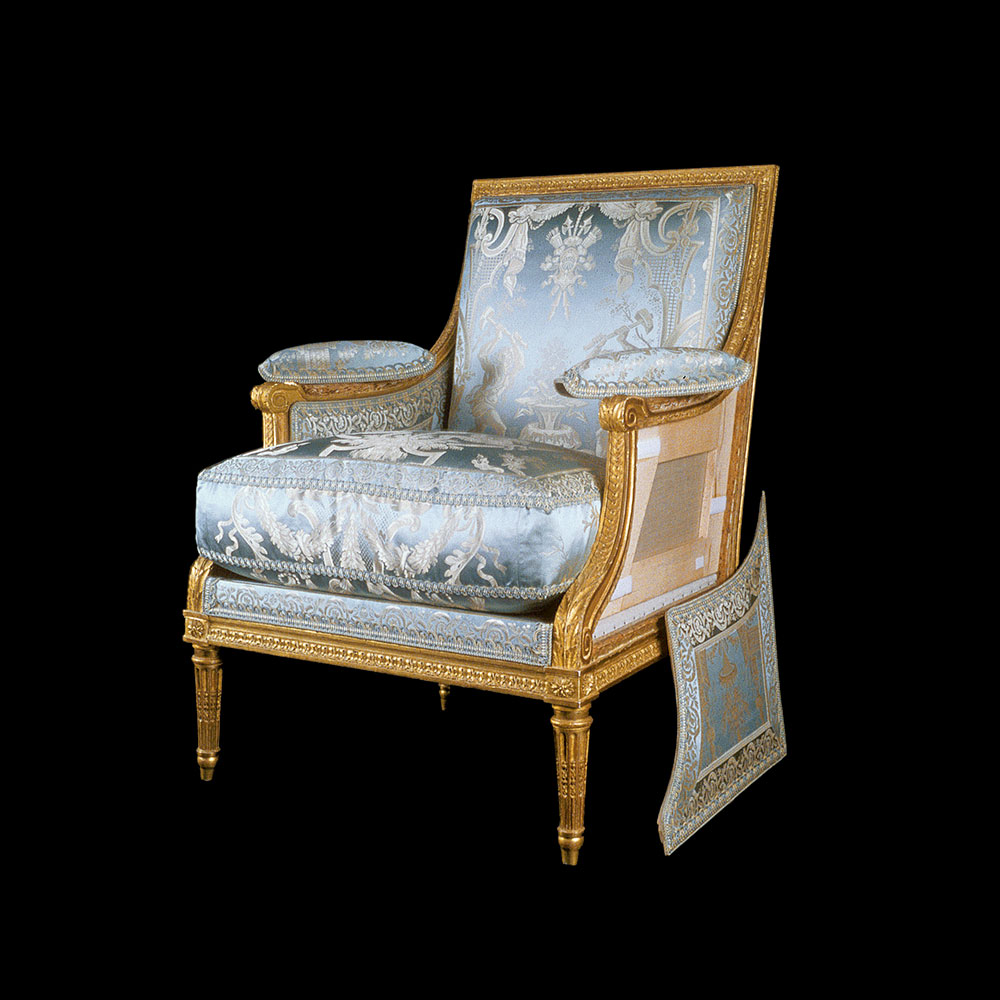Museum
Conservation techniques
A technique inspired by ancient practices for non-intrusive reupholstery
It all started with a simple question: “How can we reupholster ancient furniture without harming the fragile wood?” That's when we came up with the idea to develop a new way of reupholstering for museums and private clients. We first considered the ancient tradition of "à châssis" upholstering, i.e. removable panels which could be changed easily according to the season. This way, traditional methods can be safely applied on separate frames, thus preserving the old wood and with it any existing traces of previous restorations, leaving marks and stampings untouched. Additionally, the wood is spared any hammer impact which could damage weakened joints, fragile paintings or gildings. Frames can be disassembled very quickly and the conservator or the historian can access the original wood frame and find traces of every previous restoration. This new technique was born from our expertise and from research undertaken at the restoration workshops in the J. Paul Getty Museum in Los Angeles. It is now recognized as a major milestone in the history of upholstery. The Maison Brazet has ensured that this technique would remain freely and publicly available so the whole world could benefit from it.

